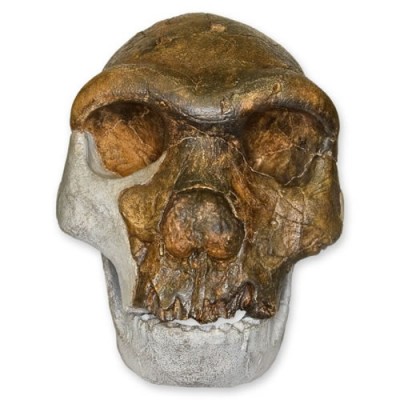- 50% SALE
- Dental
- Midwifery
- New Products
- Anatomical Models
- Birth Sets, Dolls & Pelvis
- Brains and Heads
- Circulation
- Digestion
- Ears and Senses
- Excretion
- Eyes
- Hands and Feet
- Heart
- Individual Bones
- Infections and Illnesses
- Larynx
- Mammary Gland
- Muscular Models
- Nails
- Nerve Models
- Obstetrics
- Pelvis Reproduction
- Reproduction
- Respiration
- Skeletons
- Skin
- Spinal Cord
- Teeth and Jaws
- Torsos
- COVID
- Budget Models
- Charts & AV
- Manual Handling
- Medical Models
- Medical Simulators
- Osteology
- Veterinary
- Plant & Animal
Bodo Skull
This Homo heidelbergensis skull was discovered by Asfaw, Whitehead and Wood in 1976 in Bodo D'ar, Ethiopia. Its estimated age places it as a contemporary of Homo erectus; however, its combination of features positions it as a transitional fossil. With Homo erectus it shares a broad massive face (its face is the largest among all fossil hominids) and heavy browridge. The more modern features that it exhibits include a brain capacity (estimated at 1250 cc) that falls within the range of Homo sapiens, the shape of the nasal bones, and a browridge that, while heavy, is composed of separate supraorbital tori, Acheulean hand axes and cleavers, along with animal bones, were found at the site, suggesting that Bodo butchered animals. Interestingly, the Bodo cranium has cut marks on it indicating that stone tools were used to take the flesh off the skull shortly after the death of this individual.






